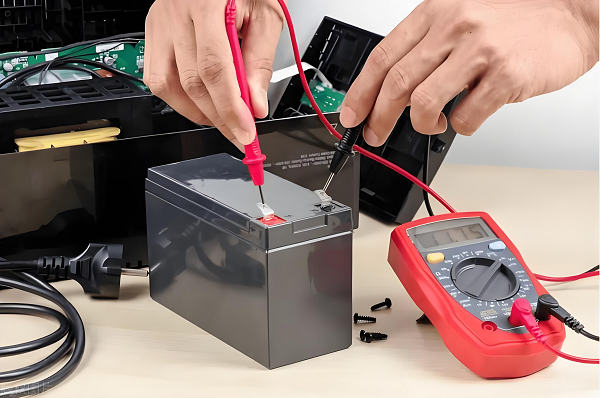"Battery repair artifact", "One move to restore 100% capacity", "Old battery refurbished as new" - similar advertisements are flooding the Internet, attracting countless users who are troubled by battery life issues. But can batteries really "rejuvenate"? Repair or IQ tax? Is refurbishment legal? This article will clear the fog for you and provide rational solutions based on battery chemistry principles and industry truths.

I. The essence of battery aging: irreversible chemical decay
Whether it is a mobile phone lithium battery, an electric vehicle power battery or a lead-acid battery, the essence of aging is an irreversible chemical reaction of the internal materials:
- Lithium battery: electrolyte decomposition, positive electrode material structure collapse, lithium dendrite growth.
- Lead-acid battery: plate sulfidation, electrolyte stratification.
- NiMH battery: electrode passivation, active material shedding.
Conclusion: Battery capacity decay is an inevitable result of physical and chemical processes and cannot be "repaired" by simple means.
II. The truth about common "repair methods" on the market
1. Software repair (such as "battery calibration" on mobile phones)
- Principle: Only reset the data of the power meter chip to make the power display more accurate.
- Effect: The real capacity cannot be restored, similar to "making an old man look younger after makeup".
- Applicable scenarios: Abnormal power display (such as sudden shutdown at 20%).
2. Pulse repairer (for lead-acid batteries)
- Principle: High-frequency pulse current breaks up lead sulfate crystals (sulfurization) and restores part of the capacity.
- Effect: Effective for slightly sulfided lead-acid batteries (capacity recovery of 10%-30%), but not for lithium batteries.
- Risk: Excessive use may damage the plates.
3. Add repair fluid (lead-acid/partial lithium batteries)
- Operation: Pry open the battery and inject "mysterious liquid" (usually distilled water or dilute sulfuric acid).
- Risk:
a. Lead-acid battery: The capacity may be restored temporarily, but it is easy to cause leakage.
b. Lithium battery: Destroy the sealing, causing short circuit or leakage.
4. Activation by deep charge and discharge
- Myth: "Using the battery until it shuts down and then fully charging it can restore capacity."
- Truth: Deep discharge will aggravate the damage of lithium batteries and accelerate aging.
III. Gray area of battery refurbishment
1. What is a refurbished battery?
- Definition: Replacing the shell, label, or part of the battery cells of a used battery and disguising it as a new battery for sale.
- Commonly found in: electric vehicle batteries, mobile phone third-party repair markets.
2. Risks of refurbished batteries
- Safety hazards:
a. Poor quality battery cells are prone to fire and explosion (such as the spontaneous combustion of refurbished power banks in Shenzhen in 2019).
b. The protection circuit has been removed or tampered with, and the risk of overcharge/over-discharge is high.
- Performance defects:
a. False capacity (nominal 5000mAh, actual only 3000mAh).
b. Short cycle life (may be scrapped after a few months).
3. Legal refurbishment vs. illegal refurbishment
- Legal refurbishment:
a. Manufacturers test, reassemble and certify recycled batteries (such as Tesla's power battery cascade utilization).
b. Clearly mark "refurbished" and provide quality assurance (such as Apple's official refurbished products).
- Illegal refurbishment:
Small workshops have no testing equipment and directly change the shell and label, which is a fraudulent act.
IV. How should users deal with battery aging?
1. Scientifically extend life, not blindly repair
- Lithium battery: maintain 20%-80% power and avoid high temperature.
- Lead-acid battery: fully charge once a month to prevent sulfation.
- General principle: use the original charger to avoid overcharging and over-discharging.
2. Determine when to replace the battery
- Lithium battery: health <80% or battery life reduction >30%.
- Lead-acid battery: full voltage is 10% lower than the nominal value (such as 12V battery <10.8V).
- Danger signal: bulging, leakage, abnormal heating.
3. Choose a formal replacement channel
- Electronic equipment: official after-sales or authorized repair points (such as Apple Store, Huawei Service Center).
- Electric vehicles/cars: brand stores or 4S stores, ask for battery quality inspection reports.
4. Environmentally friendly treatment of used batteries
- Do not discard: heavy metals pollute soil and groundwater.
- Formal recycling:
a. Mobile phones/lithium batteries: community hazardous waste stations or electronic product recycling points.
b. Electric vehicle batteries: dealers trade in old batteries for new ones or professional recycling companies.
V. Future technology: Is true "battery repair" possible?
1. Solid electrolyte regeneration:
- Repair electrolyte cracks by heating and pressurizing in the laboratory (Tokyo University 2022 experiment).
2. Lithium metal recycling technology:
- Extract lithium from used batteries and re-prepare electrodes (such as Tesla's "battery powder regeneration").
3. AI predictive maintenance:
- Use the battery management system (BMS) to warn of aging in advance and dynamically adjust the usage strategy.
Conclusion: Accept aging and deal with it rationally
Batteries are like human bodies. Aging is irreversible, but scientific maintenance can delay decline. Do not believe in the "repair myth" and beware of refurbishment traps. When a battery reaches the end of its life, please give it an environmentally friendly end - recycling, rather than forcibly "extending its life".



